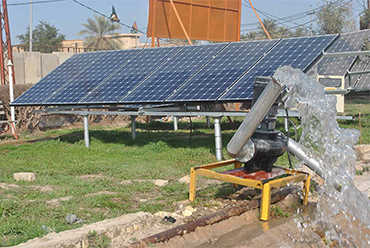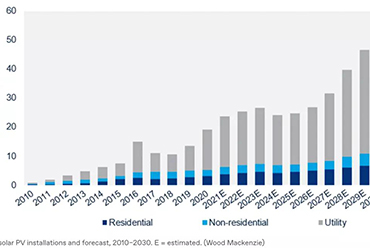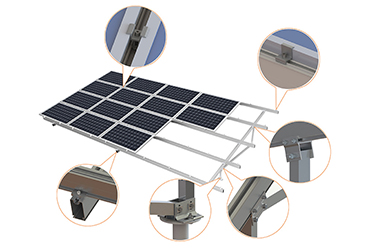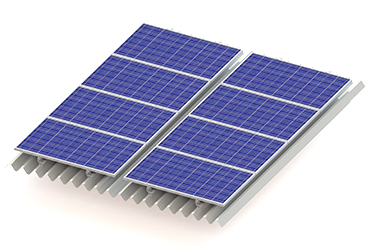
As a warmly Family , UISOLAR usually celebrate the Birthday together every two months. And today, Feb. 24th , also the 12th Birthday of UISOLAR. So we celebrate our company’s birthday together with our members, whose birthday is from Jan. ~Feb. We can enjoy drinks, snack, sweets and fruit, which was prepared by our Administration Dept. We can talk and have a small relax after a whole day’s work. At the same time, our boss also prepare some gift for our team to commemorates this special time for UISOLAR. UISOLAR have been engaged in the manufacturing and designing for the solar mounting structures for more than 12 years. Our products including the Roof Mounting Structure , Ground Mounting Structure and Carport. With High Quality and Easy Installation, our products welcomed by many markets. Any need, please do not hesitate to contact us!
Read More
In 2021, new power systems, silicon material price hikes, building-integrated photovoltaic, county-wide promotion, heterojunction cells, and large-scale wind and solar bases... These words in the industry will gradually become familiar to the society. In 2021, to sum up in one sentence, under the guidance of policies, photovoltaic have become the main energy source, and are no longer a "substitute player". Some reviews can be made from the following aspects: 1. Industry chain overview and installed capacity Looking back on 2021, under the combined effect of policy guidance and the continuous application of new technologies, my country's photovoltaic industry will continue to maintain its position as the world's first in terms of production capacity, output and technology level. Specifically, the photovoltaic industry chain is divided into: silicon materials, silicon wafers, cells, modules and other links. According to the statistics of the China Photovoltaic Association, my country's current polysilicon and module production ranks first in the world for 9 consecutive years and 13 years. As of 2019, my country's polysilicon production accounted for 67.3% of the world's production, silicon wafer production accounted for 97.4% of the world's production, cell production accounted for 78.7% of the world's production, and module production accounted for 71.3% of the world's. According to data released by the National Energy Administration, from January to November 2021, the cumulative installed capacity of domestic photovoltaic is 34.8GW, a year-on-year increase of 34%, of which the annual cumulative scale of households is 16.49GW, a year-on-year increase of 64%. It is estimated that the annual domestic photovoltaic installed capacity will reach 50GW above. In fact, due to the rise in silicon material prices and other reasons, the newly installed photovoltaic capacity in my country in 2021 is slightly less than the expected target, which also leaves more room for growth in 2022. 2. Policy Review Policy support is undoubtedly a powerful driving force for the development of the industry. In 2021, policies to support the development of the photovoltaic industry will be further increased. From the clear construction of a new power system with new energy as the main body, to the promotion of photovoltaic pilot projects in the whole county, to the carbon emission reduction support tools launched by financial institutions, the photovoltaic industry is like a duck in water. From the perspective of the policy evolution process, the support for the development of photovoltaic at the national level is increasing. From the beginning of the "Eleventh Five-Year Plan" to 2021, photovoltaic households have become another new focus after years of rapid growth in the photovoltaic industry. During the "14th Five-Year Plan" period, it clearly advocated the development model of simultaneous development of centralized and distributed energy, and vigorously increased the sca...
Read More
Although the global economic situation is changing and the domestic energy policy of the United States is constantly changing, the US solar market has successfully achieved a decade of stable growth. The growth rate of solar energy in the United States is staggering and sustained. In addition to the 23GW deployed in the United States in 2021, the research organization S&P Global Market Intelligence also predicts that 44GW of photovoltaic will be put into use in 2022, which is almost double that of 2021. UISOLAR hope to have the chance to participate in some projects. According to reports from the Solar Energy Industry Association and Wood Mackenzie, the cumulative installed capacity of solar photovoltaic in the United States has exceeded 100 GW. S&P’s researchers said that demand in the United States remains strong, with 17.4 GW of power generation capacity under development or under construction. In the memory of many solar analysts, the price of solar system hardware has risen for the first time in an industry where prices continue to fall. All commodity materials used in the manufacture of solar modules are under pressure from rising prices. Global logistics difficulties are forcing delays in the delivery of photovoltaic materials and modules and rising prices. It is estimated that transportation costs have risen by 500%. Solar energy is still the lowest-cost source of power generation in many places, but power purchase agreements are being renegotiated due to meager profits. Nevertheless, the strong demand for solar energy means that photovoltaic projects are more temporarily postponed rather than cancelled. Promote U.S. solar manufacturing American solar manufacturers basically lost in the war with China. According to Wood Mackenzie's data, among the nearly 400 GW of photovoltaic module production capacity in the world, the current US photovoltaic module production capacity is only 7.5 GW. Determined American policymakers are trying to promote legislation through subsidies and support to stimulate the domestic solar manufacturing industry and use its power generation as a potential employment engine. Biden and the Trump administration have agreed on at least one thing: to maintain trade sanctions on Chinese goods, including solar panels. Import tariffs are either an effective tool to defend trade sovereignty, or a blunt tool that increases consumer costs and has little effect on the creation of domestic industries. The U.S. International Trade Commission recommended last month that Biden maintain tariffs on imported crystalline silicon photovoltaic cells and modules; on the other hand, the Solar Energy Industry Association asked Biden to stop imposing tariffs.
Read More
UISOLAR wish all the members a sparkling Christmas and bright happy New Year! Much joy to you in the upcoming year. Christmas is celebrated to remember the birth of of Jesus Christ, who Christians believe is the Son of God. Christmas is now celebrated by people around the world, whether they are Christians or not. Christmas in China has been paid very high attention now. It's a time when family and friends come together and remember the good things they have. As a Foreign trade company, we UISOLAR pay more emphasis on this annual Christmas. We always celebrate Same festival with our customers. We had a celebrating party at Christmas EVE. In the sound of music, All members get together to have a party. Sound of the collision, talking sound and laughter woven into a amazing music. May Christmas and the coming year bring happiness to you! May happiness follow wherever you go. Thank you to all in the solar and renewable markets as we all work to save the planet one array and one project at a time. Wish you and your family peace, health and happiness through Christmas and the coming new year 2022!
Read More
Polaris Solar Photovoltaic Network News: As a major hydro-power country, Brazil's hydro-power installed capacity accounts for nearly 80% of the total renewable energy power installed capacity so far. With the rapid economic growth and the impact of the drought this year, Brazil's energy supply has tightened, and both coal and natural gas need to be imported in large quantities. In this context, wind power and photovoltaic have become the best options for Brazil to reduce its dependence on fossil energy. Inspired by the mid- to long-term emission reduction targets and the continuous improvement of renewable energy competitiveness, Brazil has had a strong willingness to develop renewable energy in recent years. A few days ago, Brazilian energy regulatory agency Aneel approved a new regulation for multi-energy complementary power stations, hoping to promote the development of renewable energy represented by wind power and photovoltaic power through continuous improvement of relevant laws and regulatory systems. New regulations promote clean energy development It is reported that the new bill released by Brazil first defines the range of energy types for multi-energy complementary power stations, clearly supports power stations with wind power and photovoltaic power generation as the main energy type, and allows the addition of hydro-power and thermal power plants to encourage the synergy of different energy combinations Development has prompted Brazil to make better use of renewable energy. In addition, the new bill also promulgated the electricity price setting mechanism for such power stations, grid access thresholds, rules for signing electricity sales contracts, network fees, and related preferential tax policies.
Read More
Polaris Solar Photovoltaic Network News: On Wednesday, local time, Amazon announced that it is adding 18 new utility-scale wind and solar projects to its renewable energy portfolio. The company said these locations will be in the United States, Finland, Germany, Italy, Spain and the United Kingdom, and will add 2 gigawatts of additional energy capacity. So far, Amazon has announced 274 global renewable energy projects, 105 of which are wind and solar projects, and 169 are solar roofs for facilities and stores. The company also stated that last year, its promised projects will generate 4 GW, so this year, its promises represent a 40% increase. Commenting on the news, the CEO of the Clean Energy Buyers Association (CEBA) Miranda Ballentine said: “For the second year in a row, Amazon has set a new record because it is committed to fully using renewable energy by 2025, which is ahead of schedule. Five years. Large-scale clean energy investments like this are beneficial to all of us and should become the new normal in industries of all forms and sizes. They bring high-paying green jobs to local communities and support our communities to realize the American power system The goal of 90% carbon-free. It suggests the need of solar will be larger and larger to deal with rising electricity bill.
Read More online service
online service +86 (0592)5663849
+86 (0592)5663849 sales@uisolar.com
sales@uisolar.com solar-mount.au
solar-mount.au